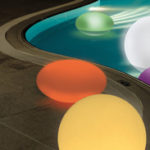Cholesterol is a familiar term that typically evokes adverse undertones when it involves health and wellness. Most of us have actually found out about the risks of high cholesterol levels and its association with heart diseases. Nonetheless, recognizing what cholesterol really is and its function in our bodies is crucial for keeping health. In this write-up, we will explore the globe of cholesterol, discovering its features, the different types, and also how to keep a healthy and balanced balance.
Cholesterol is a waxy, fat-like compound discovered in every cell of our bodies. It plays an important function in numerous physical procedures, including the production of hormones, vitamin D, and also bile acids essential for food digestion. Our bodies naturally generate cholesterol in the liver, yet it can additionally tonerin medicamento be obtained through certain foods we eat.
Both Kinds Of Cholesterol
Cholesterol is transferred in the bloodstream by lipoproteins, which keramin za glivice are in charge of bring cholesterol to and from cells. There are two major types of lipoproteins: low-density lipoprotein (LDL) as well as high-density lipoprotein (HDL).
1. Low-Density Lipoprotein (LDL)
LDL cholesterol is generally described as “poor” cholesterol. When there is an excess of LDL cholesterol in the bloodstream, it can develop in the wall surfaces of arteries, forming plaques that narrow as well as solidify the arteries. This condition, referred to as atherosclerosis, can boost the threat of heart disease as well as stroke.
2. High-Density Lipoprotein (HDL)
HDL cholesterol, on the other hand, is usually called “excellent” cholesterol. It assists eliminate LDL cholesterol from the arteries and moves it back to the liver for handling and elimination. High degrees of HDL cholesterol are associated with a lower threat of cardiovascular disease.
While LDL and also HDL cholesterol are the primary types, there are other subtypes worth stating. Very-low-density lipoprotein (VLDL) brings triglycerides, an additional kind of fat, and also intermediate-density lipoprotein (IDL) is a transitional lipoprotein between VLDL and LDL.
Understanding Cholesterol Levels
Keeping an eye on cholesterol degrees is very important for maintaining heart health and wellness. Complete cholesterol, that includes LDL, HDL, and also various other cholesterol kinds, is determined in milligrams per deciliter (mg/dL) of blood. Here is a malfunction of the different cholesterol degrees:
- Preferable Overall Cholesterol: Much less than 200 mg/dL
- Borderline High Total Amount Cholesterol: 200-239 mg/dL
- High Complete Cholesterol: 240 mg/dL and above
- Ideal LDL Cholesterol: Less than 100 mg/dL
- Near Optimal/above Optimum LDL Cholesterol: 100-129 mg/dL
- Bordersline High LDL Cholesterol: 130-159 mg/dL
- High LDL Cholesterol: 160 mg/dL and over
- Desirable HDL Cholesterol: 60 mg/dL as well as over
- Poor HDL Cholesterol: Less than 40 mg/dL
It is essential to note that cholesterol degrees alone do not provide a total image of heart wellness. Various other aspects, such as blood pressure as well as cigarette smoking practices, need to be thought about also.
Keeping Healthy Cholesterol Levels
Keeping cholesterol levels within a healthy variety is critical for general well-being. Here are some way of life modifications and also routines that can assist preserve ideal cholesterol levels:
- 1. Healthy Diet Regimen: Choose a diet rich in fruits, veggies, entire grains, lean proteins, and also low-fat milk items. Restriction the usage of saturated and also trans fats, cholesterol-rich foods, and also sweet drinks.
- 2. Regular Workout: Engage in exercise for a minimum of 150 mins weekly. Activities like quick walking, jogging, biking, or swimming can assist raise HDL cholesterol and also boost total cardio health and wellness.
- 3. Weight Monitoring: Keeping a healthy weight can positively affect cholesterol levels. Shedding excess weight, particularly around the midsection, can help reduce LDL cholesterol.
- 4. Quit Cigarette Smoking: Cigarette smoking reduces HDL cholesterol and also problems blood vessels. Giving up cigarette smoking can significantly enhance cholesterol degrees as well as lower the risk of heart disease.
- 5. Limitation Alcohol Usage: Excessive alcohol consumption can elevate cholesterol levels and also contribute to other health issues. Modest alcohol consumption is suggested, with a restriction of one beverage daily for women and two drinks for males.
- 6. Medicine: In many cases, drug might be recommended to handle high cholesterol levels. Statins, fibrates, bile acid sequestrants, and also other medicines can help lower LDL cholesterol and also boost HDL cholesterol.
The Value of Routine Cholesterol Screening
Regular cholesterol screening is crucial for early discovery as well as avoidance of possible illness. It is suggested to have a cholesterol testing every 4 to six years for grownups without threat elements. People with risk elements, such as a family members background of cardiovascular disease or diabetic issues, may need extra frequent screening.
By identifying high cholesterol degrees early, individuals can take proactive steps to manage their cholesterol and also lower the threat of cardiovascular diseases.
Finally
While cholesterol may have gained a negative online reputation, it is a crucial element of our bodies with important features. Understanding the different sorts of cholesterol, maintaining healthy levels, as well as taking on a heart-healthy way of living can go a long way in guarding our cardio health. By prioritizing routine cholesterol testing as well as making notified options, we can take control of our health and health.
























































































